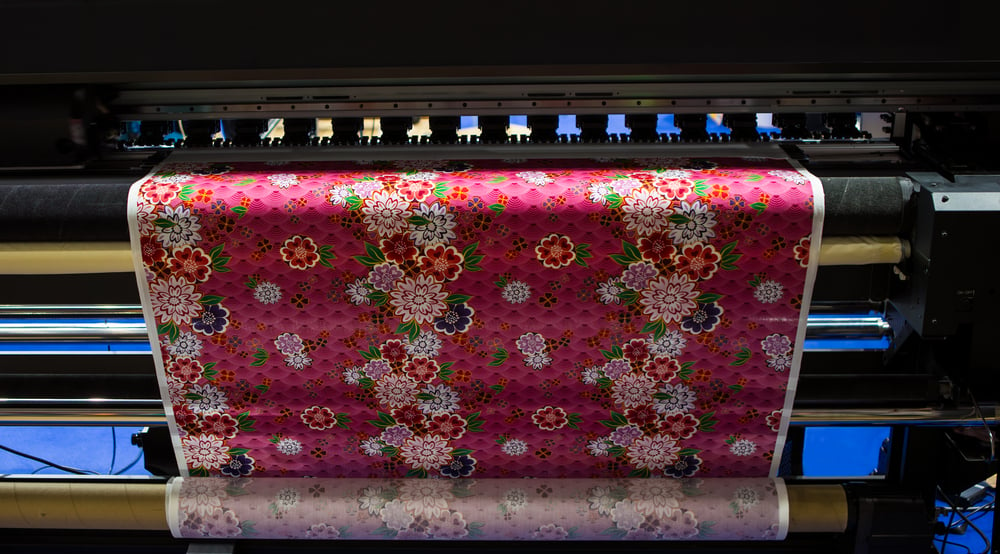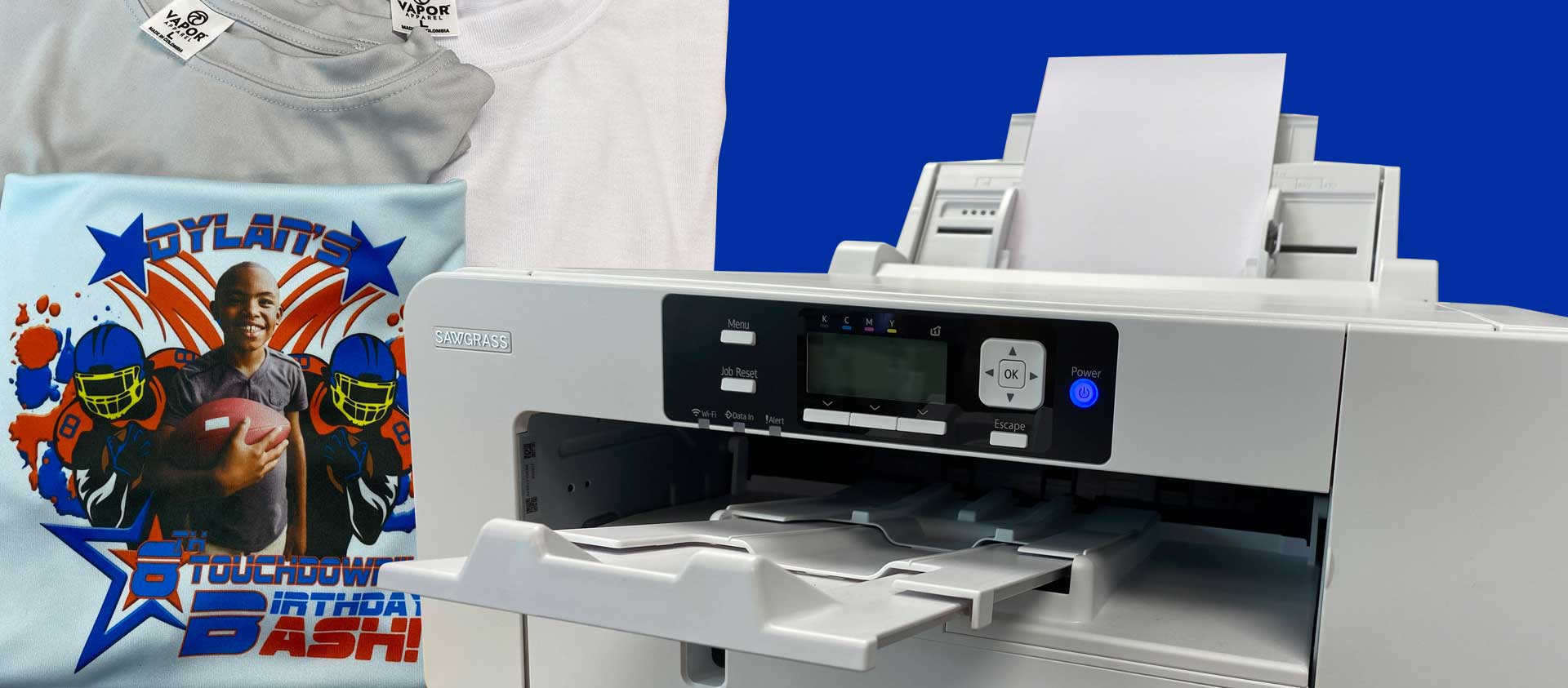Why DTF Printing is the Future of Custom Apparel Production
Why DTF Printing is the Future of Custom Apparel Production
Blog Article
A Comprehensive Overview to the Different Sorts Of Fabric Printing Strategies
Each method, from the meticulous craftsmanship of block printing to the fast effectiveness of screen printing, serves unique purposes and provides distinct benefits. Digital printing's versatility and ecological awareness stand in raw contrast to the quick customization of warm transfer printing.
Block Printing
Block Printing, one of the earliest techniques of textile decoration, has an abundant background that dates back to ancient civilizations. The procedure includes carving intricate layouts into wooden blocks, which are after that dipped in color and pressed onto textile to develop patterns.
The accuracy and craftsmanship associated with block printing make it a labor-intensive procedure, however it also permits for a high degree of modification. Craftsmens can create distinct patterns by combining various blocks or varying the application of color. This versatility has added to the enduring appeal of block printing in both conventional and modern textile layout.
Block printing is especially valued for its visual high qualities, consisting of the minor variants in pattern and color that arise from the hand-printing process. These imperfections lend an unique personality per item, differentiating it from mass-produced materials. In spite of breakthroughs in modern-day printing modern technologies, obstruct printing stays a cherished strategy, commemorated for its historical significance and imaginative worth.
Screen Printing
Display printing, another famous fabric decoration method, has actually transformed the sector with its performance and flexibility. This approach involves producing a pattern, referred to as a screen, and utilizing it to use layers of ink on the printing surface. Each color in the style calls for a different screen, which permits intricate and vivid multi-colored prints.

Among the vital benefits of display printing is its adaptability to various kinds of fabrics, including cotton, polyester, and blends. This method is especially appropriate for large-volume orders because of its cost-effectiveness and rate. The longevity of the prints is one more substantial advantage, as the ink bonds well with the fabric, guaranteeing durable designs that hold up against multiple laundries.
When dried, the layout is moved onto the emulsion-coated screen using a UV light resource. Ink is after that pushed with the stencil onto the fabric making use of a squeegee.
Display printing is commonly used in the fashion business, promotional items, and personalized clothing. Its capacity for top notch, in-depth prints secures its status as a keystone method in textile printing.
Digital Printing
Digital printing has actually quickly arised as a sophisticated method in the textile sector, leveraging innovative innovation to produce high-resolution styles directly onto textile. Unlike conventional methods, electronic printing employs inkjet printers to down payment pigment or dye-based inks onto textiles, allowing vibrant and detailed patterns with an amazing level of detail and shade accuracy.
One of the primary advantages of digital printing is its flexibility. This approach enables for on-demand printing, which substantially minimizes waste and minimizes supply costs.
In addition, digital printing is ecologically pleasant. heat transfer vinyl printing. It uses water-based inks and requires less water and energy compared to traditional methods, straightening with lasting practices. The precision of digital printing likewise permits using a broader variety of textiles, including cotton, silk, polyester, and blends, ensuring flexibility across various applications
Heat Transfer Printing
Just how does warmth transfer printing change textile style? This method has brought substantial innovations by enabling intricate and vibrant styles to be transferred onto a selection of materials with amazing precision. Warmth transfer printing includes using warmth and pressure to transfer a style from see here a specifically developed paper onto material. This process begins with publishing the preferred picture onto transfer paper making use of specialized inks. When the photo is published, the paper is positioned onto the fabric and subjected to a warmth press, which transfers the ink from the paper to the material.
Among the primary benefits of heat transfer printing is its ability to generate high-grade, comprehensive photos rapidly and successfully. It is especially fit for small manufacturing runs and custom orders, making it a prominent selection for customized garments and marketing things. Furthermore, this strategy is versatile, fitting different kinds of fabrics including cotton, polyester, and blends.
In addition, heat transfer printing is fairly cost-efficient compared to various other methods, as it needs marginal setup and lower preliminary financial investment - screen printing. This affordability, coupled with its capability for creating vivid, durable prints, emphasizes its pivotal role in contemporary material style

Dye Sublimation Printing
Dye sublimation printing, a sophisticated fabric printing technique, offers unmatched vibrancy and long life for layouts on numerous artificial materials. This technique includes converting solid dye into a gas without passing through a fluid state, permitting the color to permeate the material effortlessly. The procedure sites begins with printing the design onto an unique transfer paper making use of sublimation inks. The published transfer paper is then placed on the fabric, and both are subjected to high warmth and stress utilizing a warm press. The warm triggers the dye to sublimate and bond with the textile fibers, developing a long-term, high-resolution print that resists fading and cracking.
One of the key advantages of color sublimation printing is its ability to create continuous-tone prints with vibrant colors and intricate details. Unlike other printing approaches, the color becomes part of the textile rather than sitting on top of it, resulting in a breathable and soft coating.
Conclusion
In summary, towel printing techniques each deal one-of-a-kind benefits tailored to different demands and applications. Block printing is revered for its artisanal quality, while screen printing is useful for high-volume manufacturing. Digital printing offers adaptability and ecological advantages, whereas heat transfer printing is perfect for fast modification. Color sublimation printing generates vivid, resilient styles on synthetic materials. The variety and technology within these approaches highlight the vibrant and evolving nature of the cloth printing industry.
Each approach, from the thorough craftsmanship of block printing to the Home Page quick performance of display printing, offers special functions and provides distinct benefits. Digital printing's flexibility and ecological awareness stand in plain contrast to the swift modification of warmth transfer printing. Despite advances in modern-day printing modern technologies, block printing remains a cherished strategy, commemorated for its historical significance and imaginative worth.
Dye sublimation printing, an advanced fabric printing strategy, uses unparalleled vibrancy and durability for styles on various artificial materials. Digital printing provides convenience and ecological benefits, whereas warmth transfer printing is excellent for fast customization.
Report this page